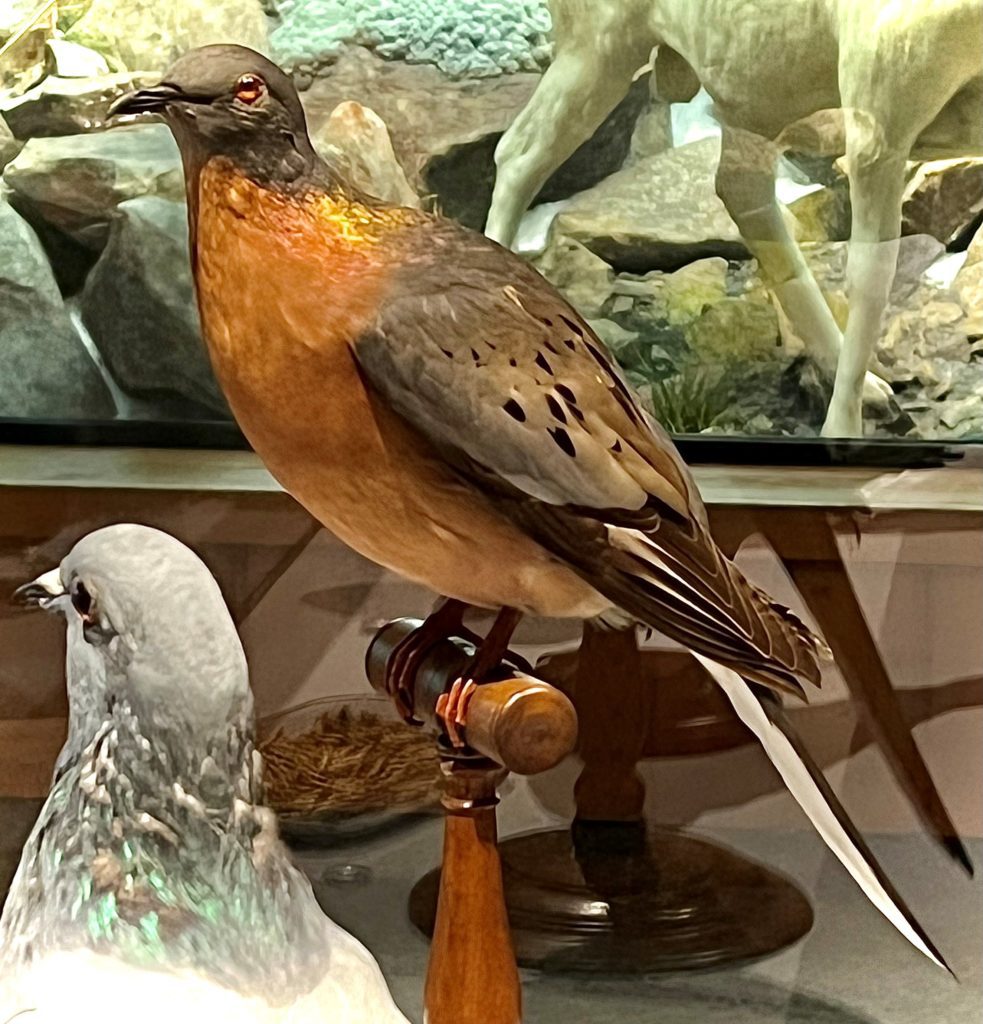by Patrick McShea

Within the Hall of North American Wildlife, a Passenger Pigeon taxidermy mount stands above a handful of other objects in a display case designed to spark viewers’ thoughts about human relationships with other creatures. On a text panel outside the case an eight-word statement serves to direct such thoughts:
Directly and indirectly, people and wildlife are connected.
Because Passenger Pigeons have been extinct for more than a century, reflections involving this native species are necessarily historical. An adjacent tray holding dozens of Passenger Pigeon leg bones excavated from an archaeology site in Pennsylvania’s Huntingdon County provides a helpful starting point for reflective time travel.

The concentration of bones, which date from the years 1400-1600, is evidence of a centuries-long utilization of the birds for food by the Indigenous Peoples who lived in what’s now central Pennsylvania. Passenger Pigeons were once so abundant in eastern North America that flocks darkened the skies for hours when the birds migrated to access seasonal feeding areas and nesting sites.
Sustainable use of the birds by humans did not continue into the 19th Century. By mid-century, Passenger Pigeons became an unregulated commodity in the rapidly expanding American economy, with the country’s growing railroad network and parallel telegraph system providing unprecedented means for sharing word of flock locations, transporting hunters to those sites, and shipping harvested birds to distant markets.
A summary statement from an exhibit about Passenger Pigeon extinction at another institution, the Milwaukee Public Museum, contains a relevant insight:
The primary factor emerged when pigeon meat was commercialized as a cheap food for slaves and the poor in the 19th century, resulting in hunting on a massive scale.
Recognizing an American slavery facet within what is commonly regarded as a natural history extinction story has never been more important. At a time when there is not consensus about how slavery should be presented as a historical topic in classrooms, the preserved remains of a once common bird have a special role to play.
In the 21st Century, museum taxidermy mounts from the 19th Century might serve as focal points for wide ranging discussions between the descendants of people who subsisted on Passenger Pigeon meat because they were enslaved, and those who could purchase little else because they were poor.
The exhibit described above is a component of We Are Nature: A New Natural History, an initiative that encourages a broader and deeper consideration of the human impact on our planet through a series of fifteen interpretive panels placed in and among existing exhibits, as well as a new interactive focal area where visitors are invited to record their thoughts, concerns, and hopes.
Patrick McShea is an Educator at Carnegie Museum of Natural History.
Related Content
Warmer Springs and Earlier Birds
Messages in Tardigrade Plastic Time Capsules
Carnegie Museum of Natural History Blog Citation Information
Blog author: McShea, PatrickPublication date: October 24, 2022
